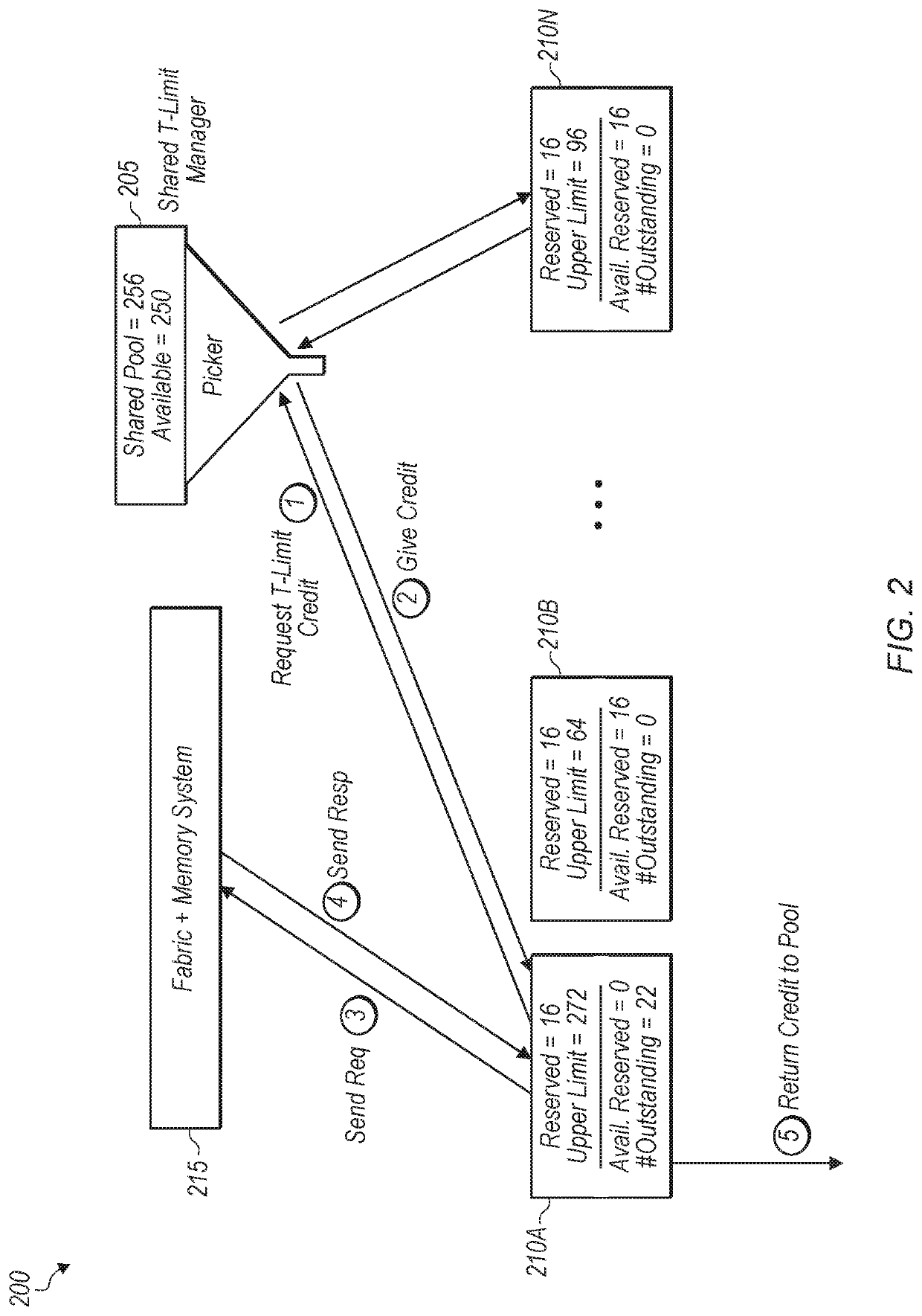Systems and methods to control bandwidth through shared transaction limits
- Summary
- Abstract
- Description
- Claims
- Application Information
AI Technical Summary
Benefits of technology
Problems solved by technology
Method used
Image
Examples
Embodiment Construction
[0019]In the following description, numerous specific details are set forth to provide a thorough understanding of the embodiments described in this disclosure. However, one having ordinary skill in the art should recognize that the embodiments might be practiced without these specific details. In some instances, well-known circuits, structures, and techniques have not been shown in detail for ease of illustration and to avoid obscuring the description of the embodiments.
[0020]Referring to FIG. 1, a block diagram of one embodiment of an apparatus 100 is shown. In one embodiment, apparatus 100 includes agents 105A-N, fabric 110, and endpoints 115A-N. Agents 105A-N are representative of any number and type of agents. Examples of agents include, but are not limited to, processing units, display controllers, graphics processing units (GPUs), and the like. Endpoints 115A-N are representative of any number and type of endpoints. Examples of endpoints include, but are not limited to, memor...
PUM
 Login to View More
Login to View More Abstract
Description
Claims
Application Information
 Login to View More
Login to View More - R&D
- Intellectual Property
- Life Sciences
- Materials
- Tech Scout
- Unparalleled Data Quality
- Higher Quality Content
- 60% Fewer Hallucinations
Browse by: Latest US Patents, China's latest patents, Technical Efficacy Thesaurus, Application Domain, Technology Topic, Popular Technical Reports.
© 2025 PatSnap. All rights reserved.Legal|Privacy policy|Modern Slavery Act Transparency Statement|Sitemap|About US| Contact US: help@patsnap.com



